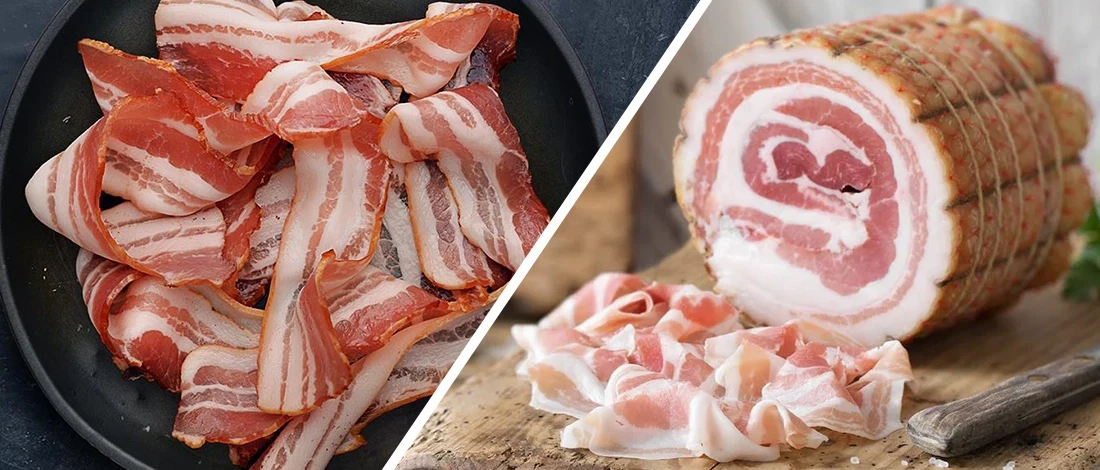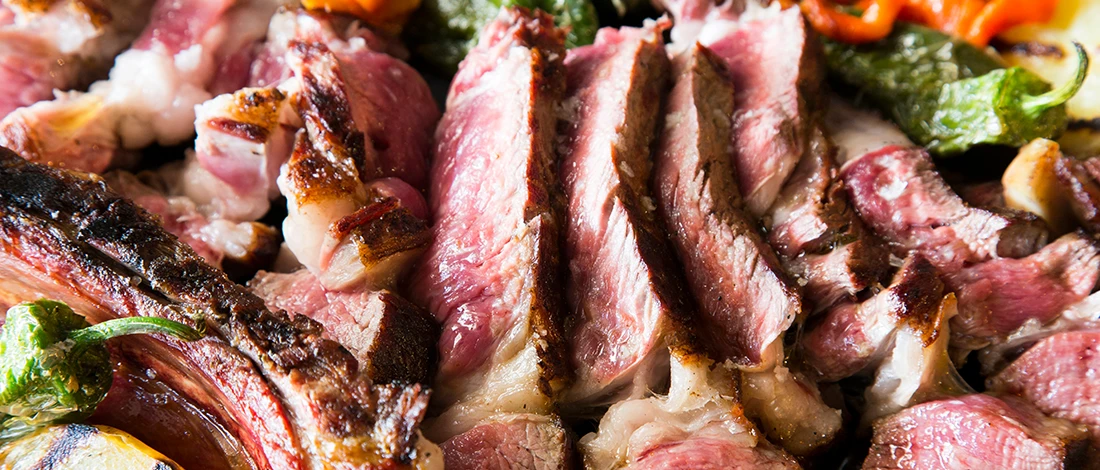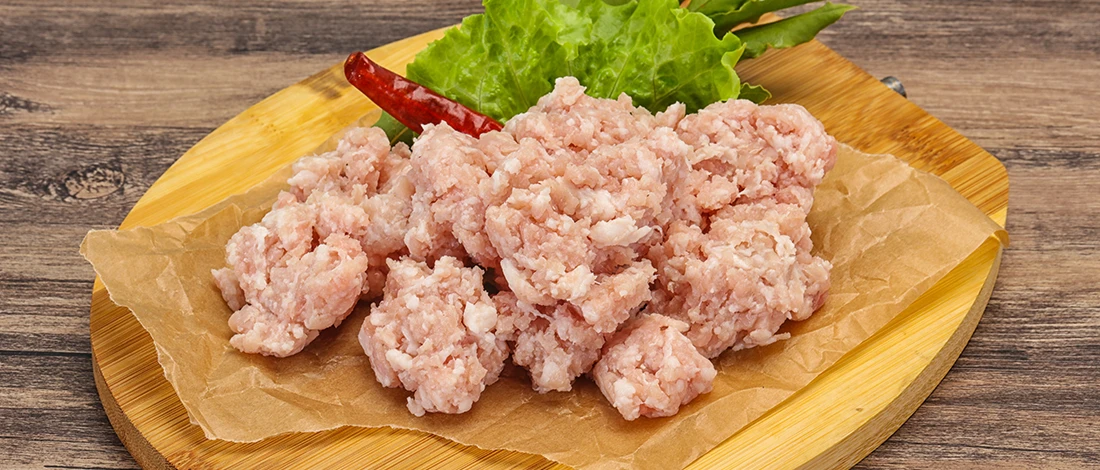As a ten-year carnivore diet follower, I always get asked if there's a difference between steak and beef.
To provide a clear answer on the differences between these two, I talked with my local butcher and spent a few weeks researching this topic.
Here is everything I found out about beef and steak.
Quick Summary
- The main difference between beef and steak is that beef is derived from a whole animal, while steak is cut from a specific part of the animal.
- Common steaks include rib eye, tenderloin, chuck roll, and strip steak.
- Thick steaks have more fat deposits and calories than beef.
- ButcherBox is a great place to start. ButcherBox is recommended because they provide 100% grass-fed beef, heritage-bred pig, and free-range organic chicken.
What Is Beef?

Beef is flesh derived from large cattle animals, such as bulls, ox, or cows.
Bulls are the most popular choice when selecting cattle for meat production since they are typically bigger than cows and have more lean muscle mass.
They are, therefore, more suited to produce premium beef cuts like filet mignon and rib cuts.
You can cook beef in different ways, including:
- Dry heat: Grilling, broiling, and roasting
- Frying: Shallow frying, deep frying, stir-frying
- Moist heat: Stewing and braising
The best beef often has great marbling, a brilliant red color, and a firm texture. It also has smooth, milky white intramuscular fat in abundance.
The common beef cuts include:
1. Rib Beef
The rib is the primordial rib cut made from cow's ribs and backbones, specifically the last six sets of ribs. I find rib cuts desirable because they have just the right amount of marbling, indicating that they have many intramuscular fat deposits.
Ribs are a high-quality cut; hence they are more expensive than others. Rib cuts like short ribs can be cooked in various methods, including searing in a cast-iron skillet, slow roasting, and grilling.
Read More: Types of Beef Ribs
2. Flank Beef

The flank is a narrow cut found beneath the loin and sirloin of a cow. These chunks are located in the abdominal region, where the muscles work vigorously.
As a result, flank cuts are one of the most muscular cuts in the cow, with long and dense muscle fibers.
Because of their hardness, flank steaks are pretty inexpensive. Flank cuts become as tasty as when seasoned right and grilled at high heat.
3. Loin Beef
The loin, located directly behind the ribs, is one of the more expensive cuts due to its famed softness. The loin is divided into two parts: sirloin and short loin.
Sirloin is also divided into many cuts: tri-tip, top sirloin steak, and bottom sirloin. I love sirloin cuts because they are often harder than loin chops and are ideal for grilling or stir-frying.
Because of their juicy taste and perfect suppleness, short loin slices are the highest quality for meat enthusiasts. Short loin steaks include tenderloin, filet mignon, strip loin, and T-bone.
What Is Steak?

Steak is practically various types of cuts from beef meat and is named according to the region it's cut from. These cuts are normally cut from the primal section of the animal carcass, which comprises the ribcage and loin region.
Steak is customarily sliced across the numerous muscle fibers that comprise the body of the cattle, giving steak its particular texture that shreds and rips when you bite into it.
Steak is an extremely versatile cut of meat that may be eaten as raw meat or cooked in various ways. You may also order your steak rare, medium rare, or well-done.
The common steak cuts include:
1. Ribeye Steak
Ribeye, my favorite steak, has a lot of marbling, which gives it a lot of taste. The cooking and preparation for grilling your ribeye are also straightforward.
Because of the marbling, you only have to flavor it with salt, black pepper, and any meat seasoning.
2. Skirt Steak
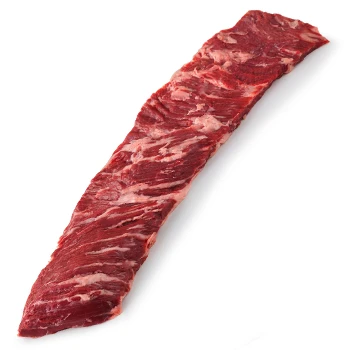
Skirt steaks are tough and firm because they have a lot of connective tissue. However, if cooked properly, it may be incredibly tender.
Skirt steaks are excellent for marinating because of their loose texture.
Pan-sear or grill over extremely high heat to get a beautiful char on the exterior but avoid overcooking the middle.
3. Tenderloin Steak
Tenderloins are not considered as delicious as other cuts due to their leanness. They make up for their lack of marbling with a creamy, buttery consistency that electrifies your taste buds and melts on the tongue every time.
Avoid overcooking tenderloin steak on high heat because they dry out easily due to their minimal fat content. Once you sear and get a nice crispy exterior, lower the heat and cook this perfect steak to your liking.
4. Hanger Steak
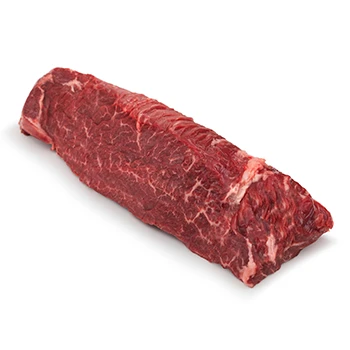
This cut is derived from a cow's belly. As the name implies, this cut hangs from the diaphragm between the ribs and the cow's loin. It has a variety of tastes and is reasonably priced.
I suggest marinating hanger steaks while cooking. This improves the overall flavor and allows them to tenderize more.
Grill over medium heat to prevent it from becoming too stiff to bite into.
5. Strip Steak
The strip steak has a robust meaty taste and ample marbling. The texture is delicate while remaining slightly chewy.
After seasoning with salt and pepper, you may pan-fry or sous-vide these steaks. Cook on high heat, but keep an eye on it so that it doesn’t dry out. I prefer to cook strip steaks medium rare than other cuts due to their decreased fat content.
For meat lovers, other types of steaks include pork steak, scotch fillet, London broil, bistro steak, and fish steak.
Also Read: What Is the Best Cut of Steak?
Differences Between Steak and Beef

While it can be challenging to differentiate between beef and steak, here are three aspects to distinguish the two.
1. Definition
Beef is generally any meat cut from a large cattle like a bull, while "steak" refers to a portion of beef sliced across the grain of the muscle.
There are several cuts of steak, each with distinct qualities defined by the location from where it was sliced from.
2. Taste
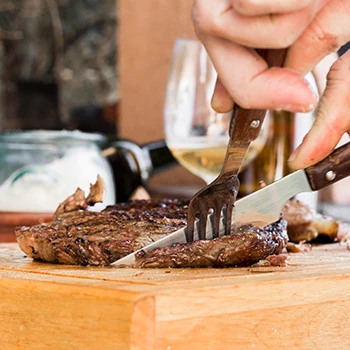
Beef is flavorful, juicy, tender, and somewhat sweet in flavor. Roast beef has an "umami" flavor, in my opinion.
A well-prepared quality round steak will taste salty and smoky. Cooking steak on high heat yields a nice caramelized crust on the outside and pink and juicy on the inside.
The meat fibers of steaks are softer and more delicious to nibble on.
3. Marbling
Marbling is the tiny specks of fat that develop inside the muscles of red meat [1].
Beef has more marbling than steak because a layer of intramuscular fat insulates different regions of the cattle. As for steaks, those cut from the front end of the cattle, like ribeye and blade, have more marbling because most fat is concentrated around that region.
"When cooked, marbling enhances taste and juiciness as the fat melts into the meat. Because the marbling keeps the steak moist and wet, natural fluids do not evaporate under high heat on a skillet."
- Michael White, Executive Chef
Beef vs. Steak Nutritional Profile

Let's look at the nutritional profile breakdown of steak vs. beef as per the USDA.
1. Calories
Steak has more calories than beef. Grilled ribeye steak has 291 kcal per 100g, and grilled beef has 250 kcal per 100g. Therefore, the difference is approximately 41 g. The majority of the calories in steak and beef come from fat [2].
2. Proteins
Both beef and steak have the same amount of proteins. 100g of beef meat has 25g of proteins, while 100g of cooked T-bone steak also has 25g [3]. The protein amount remains the same regardless of which part the beef steak is cut from or the cooking method.
3. Fat
Beef has less fat than steak. 100g of ground beef has 13g of fat, 5.2g of which is healthy monounsaturated fat. On the other hand, beef steaks have 23g of fat per 100g.
Related Articles:
FAQs
Which Is Healthier, Steak or Beef?
Beef is healthier than steak because it has fewer calories and healthy fats.
Is Steak Beef or Pig?
The steak is both beef and pig. Steaks are primarily cut from animals like cows, ox, and pigs. It’s good to note that cuts from pigs are called pork steaks or pork chops.
Which Part of the Cow is Beef Steak?
The beef steak comes from different parts of a cow, such as a rib, loin, or flank steak region.
References:
- https://www.ncbi.nlm.nih.gov/pmc/articles/PMC6411248/
- https://www.verywellfit.com/ribeye-steak-nutrition-facts-and-health-benefits-4845432
- https://cheatdaydesign.com/steak-nutrition-guide/



